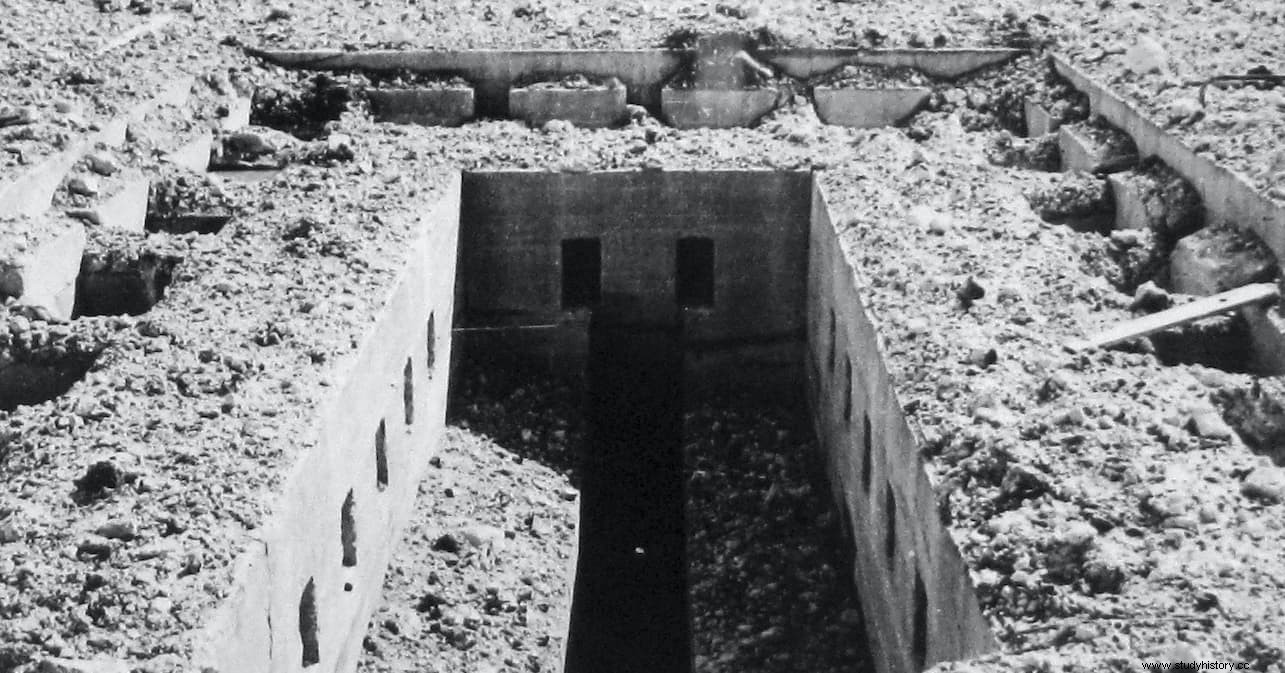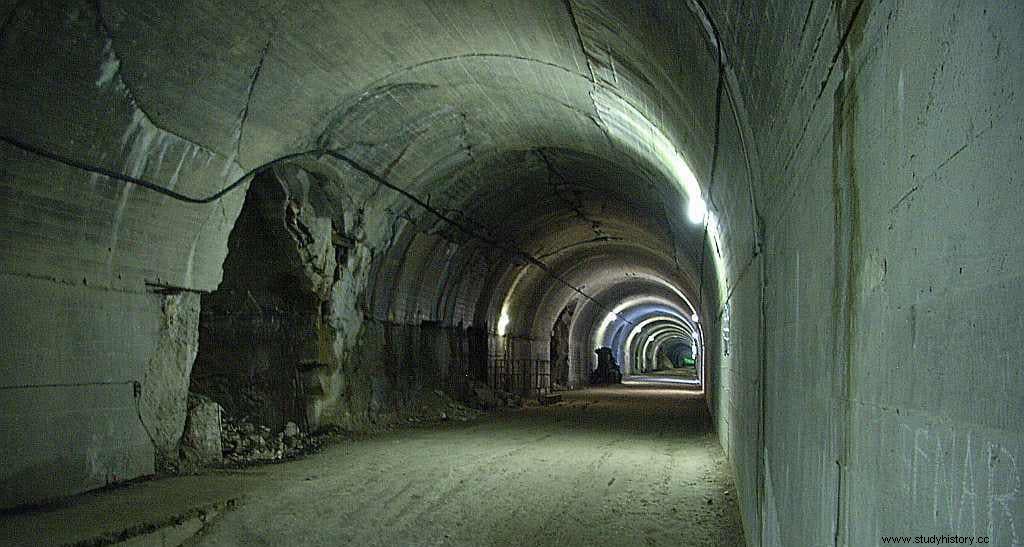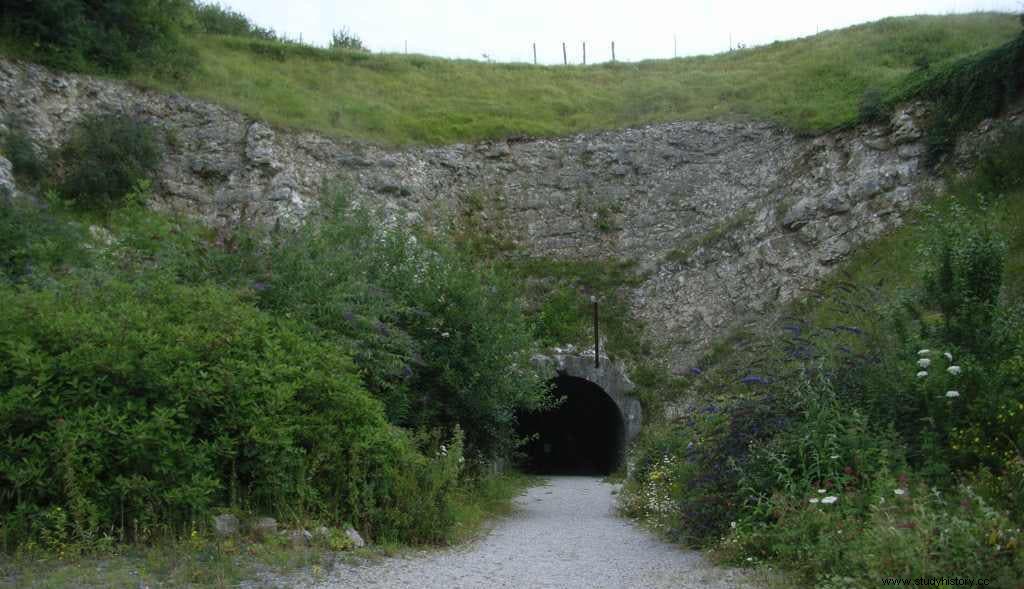In 1943, construction began on an impressive fortress to house the cannons that were to reduce London to rubble.
In August 1943, Hitler approved the start of work on an impressive battery silo dug into the limestone of a hill near the village of Mimoyecques, opposite the Pas de Calais.
From there the V-3 (Hochdruckpumpe ), the development of which had not yet been completed. In order to be launched and reach England, huge 100-meter-long cannons were necessary, which could not be moved or moved and therefore needed a fixed place to be installed.

The chosen place is located at an altitude of 158 meters above the sea and at a distance of just 165 kilometers from London. The complex has an intricate network of tunnels, the construction of which began in September 1943. A month later, the inclined silos that would house the cannons capable of firing the V-3 were being excavated. Once the work is completed, the battery would be capable of launching 10 projectiles per minute, about 600 per hour, over the British capital.
The initial design consisted of two complexes approximately one kilometer apart, each containing five silos, each housing 5 guns. Both facilities would be connected by an underground railway line, externally connected to the main line between Calais and Boulogne-sur-Mer.
The railway went 630 meters below the hill, to an unloading platform from which there was access to ten crossed galleries arranged perpendicular to the main tunnel at intervals of 24 meters. Each of these galleries housed a railway branch that served to transport the projectiles to their final location.

The V-3s were stored in galleries dug 33 meters deep under the hill. The canyons had an inclination of 50 degrees and reached a depth of 105 meters. On the surface they were covered by a concrete slab 5 meters and a half thick, with openings for the exit of the projectiles, and protected by large steel plates.
Each of the guns was oriented at an angle that marked a straight line of impact on Westminster Bridge in London.
More than 5,000 workers, mainly German engineers from different companies, but also 430 miners from the Ruhr area, as well as an undetermined number of Soviet prisoners forced to work as slaves, were employed on the gigantic work.
Although at that time the allies did not know about the development of the V-3, they did identify the place as a possible launching base for the V-2, and Mimoyecques would be intensively bombed from the end of that year 1943, which would force the Germans to interrupt the construction work, so that finally only the East complex was completed.

Thanks to these bombardments, the fortress would never enter service, being partially destroyed on July 6, 1944 by a squadron of the Royal Air Force using Tallboy earthquake bombs , capable of passing through concrete structures 5 meters thick, creating an impact crater 24 meters deep and 30 meters wide.
The collapse of the tunnels and galleries during the bombardment trapped some 300 Germans and slave laborers used by the Nazis on the construction site. By July 30, Hitler ordered the definitive abandonment of the works.
However, the Allies were unaware of the German withdrawal, and continued to attack the fortress, including with radio-controlled B-24 bombers. Joseph P. Kennedy Jr., the older brother of future United States President John F. Kennedy, died in one of these attacks.

On September 5, 1944, the fortress fell into the hands, with little resistance, of the 3rd Canadian Infantry Division. Only six months later, in March 1945, after the study of the fortress by a commission headed by Colonel Terence Sanders, the British understood the true purpose of the place and discovered the existence of the V-3. Churchill ordered its demolition due to the future danger that he could pose to his country, although it was only partially carried out. De Gaulle, who was not informed of the matter, considered it a violation of French national sovereignty.
In the following years it went through various private and public uses and is currently open to the public as a museum. There you can see an exhibition on the history of the V proto-missiles and even visit some of the tunnels. There are also memorials to allied soldiers and forced laborers who perished at the site.
